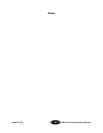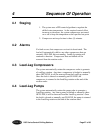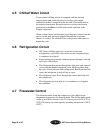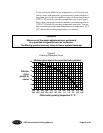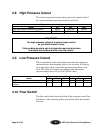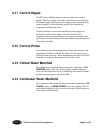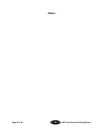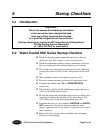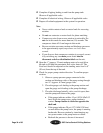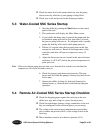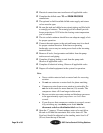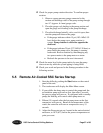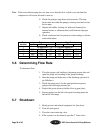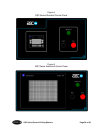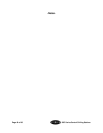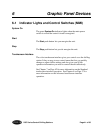
Page 34 of 86 SSC Series Central Chilling Stations
þ Complete all piping leading to and from the pump tank.
Observe all applicable codes.
þ Complete all electrical wiring. Observe all applicable codes.
þ Prepare all related equipment in the system for operation.
Note:
• Never switch contactor leads or motor leads for reversing
rotation.
• Do not use contactor or motor leads for phase matching.
• Compressor noise from reverse rotation is noticeable. Do
not run in this mode for more than ten (10) seconds. The
compressor shuts off if run longer in this mode.
• Reverse rotation can cause suction and discharge pressures
to be approximately equal; amp draws are lower than
normal.
• If you discover that compressor rotation is reversed, correct
it by switching any two main power leads into the
disconnect switch or distribution block on the unit.
þ Open the 1” (approx. 25 mm) makeup water valve and allow
the tank to fill until the automatic float valve shuts off. The
float level should be adjusted so the standing water level is 8”
(20 cm) from the top of the tank.
þ Check for proper pump rotation direction. To confirm proper
rotation:
1. Observe a pump pressure gauge connected to the
suction and discharge sides of the pump casing through
two ¼” (approx. 6.4 mm) gauge cocks.
2. Close the gauge cock leading to the pump suction and
open the gauge cock leading to the pump discharge.
3. Close the discharge butterfly valve, crack it open, then
start the pump and observe the gauge.
• If the gauge indicates within 15 psi (103.4 kPa/1.03
bars) below the pump curve, pump rotation is
correct. Pump rotation is clockwise opposite the
shaft end.
• If the gauge indicates 20 psi (137.9 kPa/1.38 bars)
or more below the pump curve, the pump is running
backwards. Reverse rotation by interchanging any
two power mains to the pump motor or starter.
• Recheck the pressure to be sure it increased.



